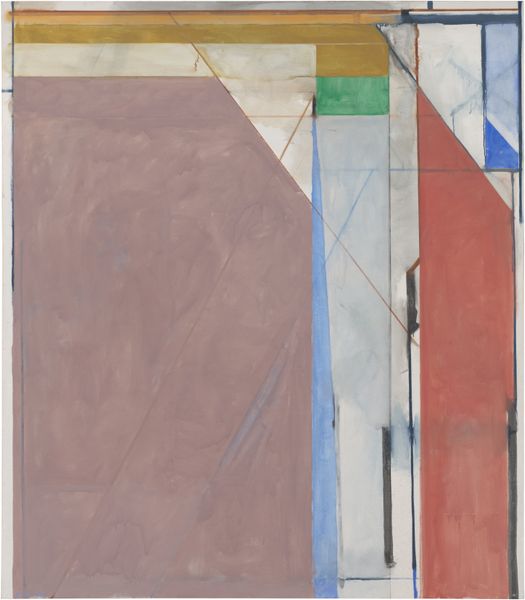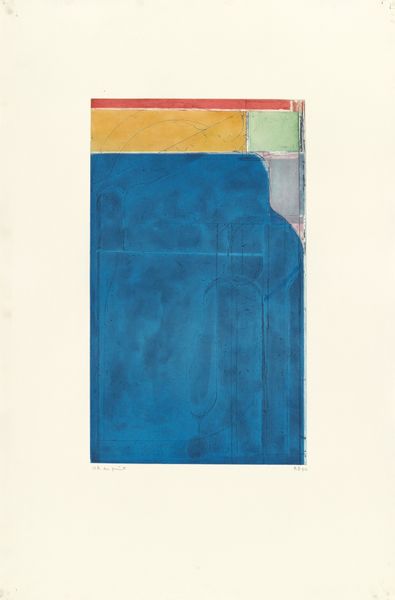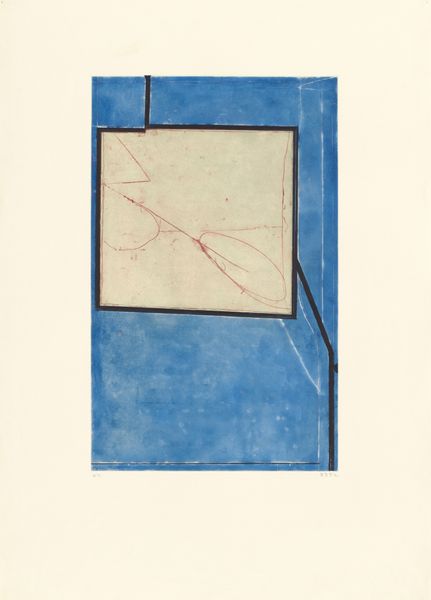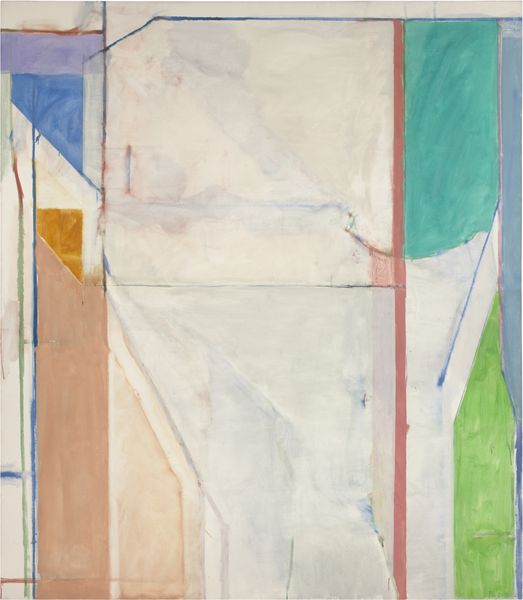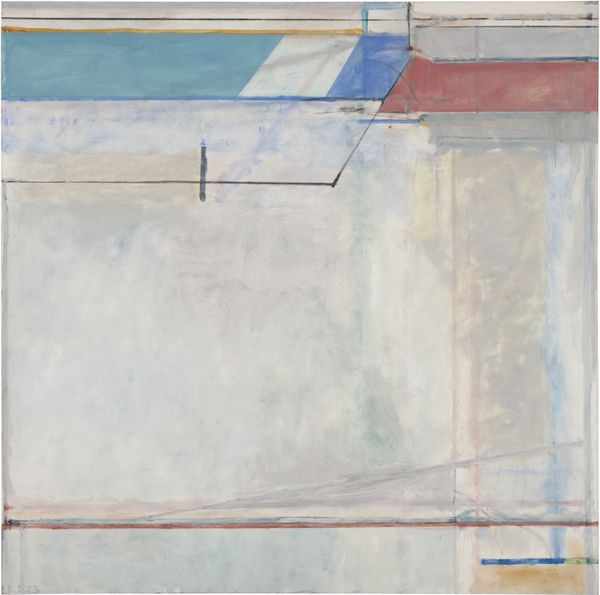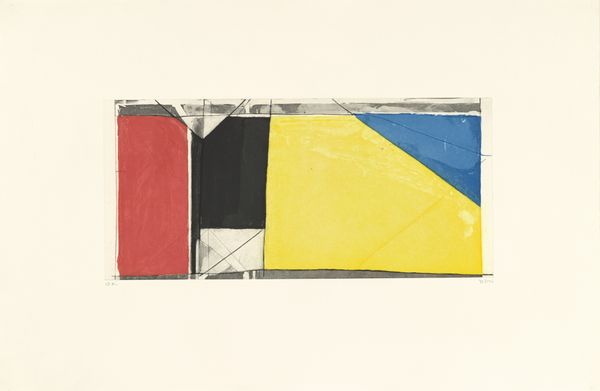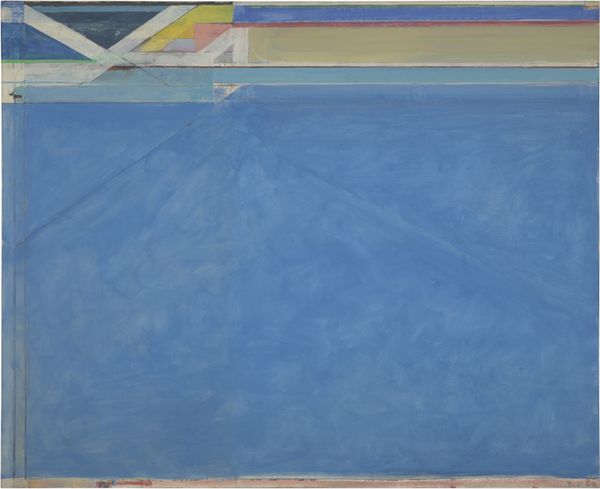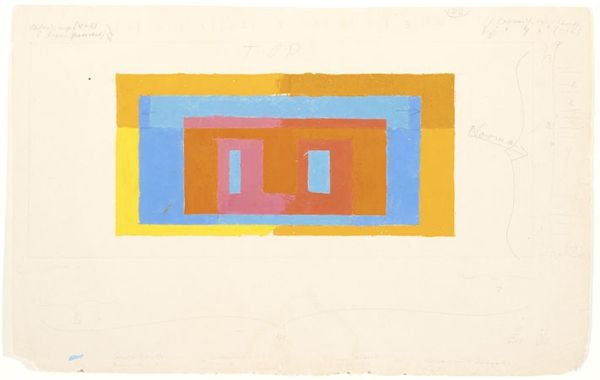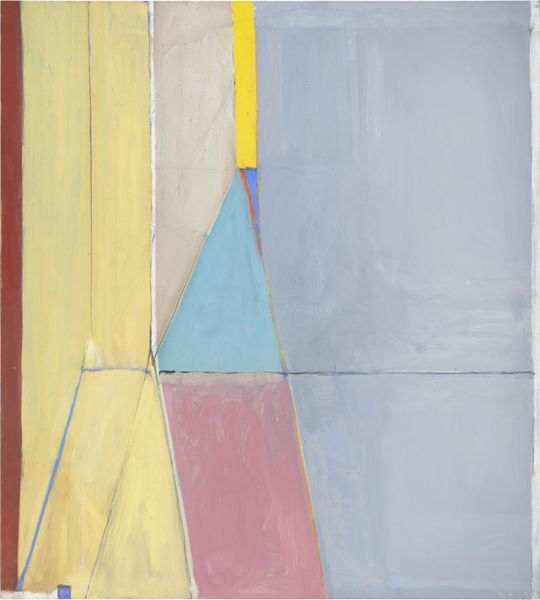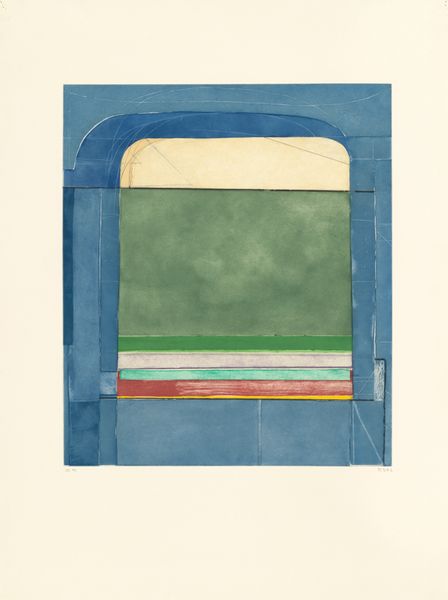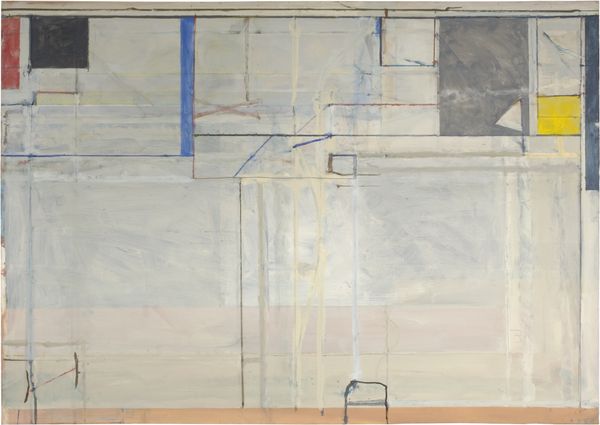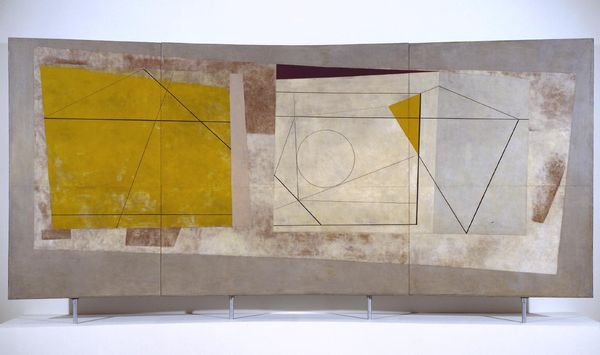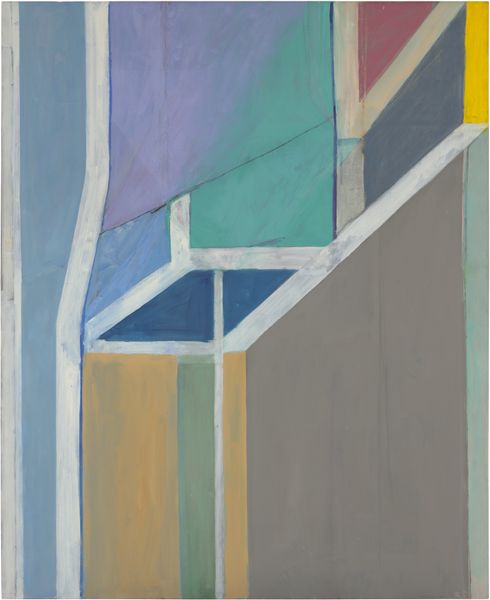
#
bay-area-figurative-movement
Dimensions: image: 40.3 x 75.9 cm (15 7/8 x 29 7/8 in.) sheet: 67.3 x 101.9 cm (26 1/2 x 40 1/8 in.)
Copyright: National Gallery of Art: CC0 1.0
Editor: Looking at Richard Diebenkorn’s “Red-Yellow-Blue” from 1986, I'm struck by its seemingly simple composition of geometric forms rendered with what looks like colored pencils. It gives off a playful, almost childlike, yet carefully considered feeling. How would you interpret this work, particularly in relation to the artistic and cultural trends of the time? Curator: This work represents a late period for Diebenkorn, a time when he moved from his celebrated "Ocean Park" series toward a more distilled geometric vocabulary. Abstraction, of course, wasn’t new in 1986, but Diebenkorn's approach stands apart. Considering its historical moment, after the high seriousness of abstract expressionism, and amid the rising market spectacle of Neo-Expressionism, this print signals a kind of retrenchment. A return to fundamental questions of form and color, a quiet defiance of prevailing trends. Do you notice the subtle imperfections within the blocks of color? Editor: Yes, the hand-drawn lines and slight color variations definitely keep it from feeling too sterile. So it’s almost like he's deliberately embracing a less polished, more human quality in opposition to both the grand pronouncements of the past and the market frenzy of the present? Curator: Precisely. He seems to be consciously avoiding the heroic gesture of earlier abstract painters, and equally resists the commodification of art that was becoming increasingly prevalent. The work’s title, too, reinforces this intention: “Red-Yellow-Blue," it's a very basic and accessible declaration. We must consider, in this sense, how artists position themselves and their art, and against what artistic and social norms. Editor: That's fascinating! I hadn’t considered it as a quiet act of resistance. It makes me appreciate it on a completely different level. Curator: Indeed. By engaging with the history of abstraction and contemporary market forces, the work gains new layers of complexity and meaning. It encourages us to consider the choices artists make about form, medium and even title.
Comments
No comments
Be the first to comment and join the conversation on the ultimate creative platform.
